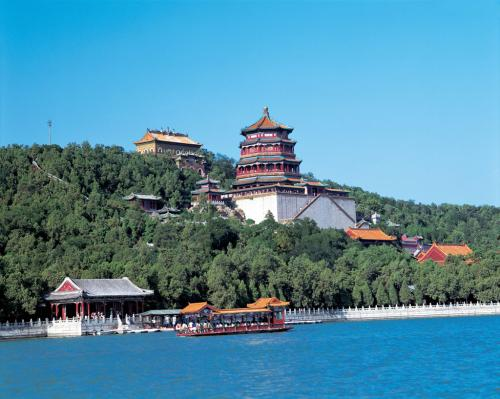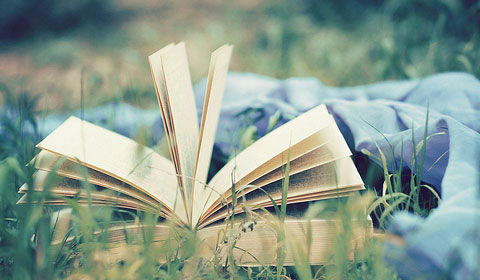独乐寺,又称大佛寺,位于中国天津市蓟州区,是中国仅存的三大辽代寺院之一!以下是关于天津独乐寺英文导游词,仅供参考!
Temple of Solitary Joy is located at inside west city gate of Ji County, Tianjin City. It is known for its refined architecture skill in Channel's ancient buildings and has got the reputation of Six Best. These are: The earliest Dingshan Gate (Gate of Withstanding Hill) of the ground hall preserved now; The earliest Chiwei object on the Hill Gate preserved now; The earliest plane distribution which took pavilion as the center on the architecture plane; The biggest clay sculptured statue of Avalokiteavara inside a pavilion in China; The Avalokiteavara is also the most ancient high storeyed one; The more precious fact is that the Temple of Solitary Joy has stood unscathed after thousand years of rain, snow, wind and frost and 28 big attacks, hence the most durable ancient Monastery of thousand years.
Entering the Temple , the first comes to sight is 10 m high gate, on the arch of which there hangs a horizontal inscribed board: Temple of Solitary Joy. The single eaves ground hall roof was the roof
building form during the western Tsin (AD265-316) and Southern and Northern Dyansty (420-589) period, which was called Siadading in ancient time and now it is called big roof. On the two ends of the plane ridge, there are inward Chiweis. Chi denoted sparrow hawk in ancient time, which is a kind of fierce bird. The stand base of the gate is comparatively low, but the hall pinnacle is much higher above eaves and the pottery animal figures look sturdy; solemn and sturdy. There is no ceiling inside the pinnacle, therefor the painted beam and purlieus are visible. The whole piece is exquisitely wrought, simple arranged and skillfully done, for which people gasp in administration.
Crossing the gate, one comes to the core building Avalokitesvara Pavilion, 23 m in height. Form outside appearance, it is two storeyed, but inside there is a hidden storey, thus three storeyed in fact. On the eaves corners, pottery unicorns are sculptured, on which little Buddha statues ride. Copper bells are hung under eaves corners, swaying with the wind, a specially refined scene. The most attractive thing is the structure of Dougong (sets of brackets on top of the columns supporting the beams within and roof eaves without——each set consisting of tiers of outstretching arms called Gong, cushioned with trapezoidal blocks called Dou). It is made of overlapping Dougong shaped wood blocks and bow shaped horizontal wood bars by adopting 24 forms with each layer stretching out as bracket, big in upper part and small in lower part, thinly scattered, steady and sturdy. It makes eaves of the pavilion look like flying, far and deep in the sky, a beautiful and magnificent view.
Entering the Avalokitesvara Pavilion, the very sight is a huge standing Avalokitesvara Statue. If one stands by it, his height is only up to her ankle. The Statue, 16.27 m in height, is the biggest clay sculpture of Avalokitesvara in China. Two statues of attendant Bodhisattvas under the knee of Avalokitesvara are also 3 m in height. On the crown of the head of Avalokitesvara, there are 10 small
Avalokitesvare's heads, hence it is called 11 faces Avalokitesvara. Reviewing around the inner part of the pavilion, one can discover that pillars of high and low storeys are not directly linked through, but the pillars of the upper storey are ed into the arch head of that of lower storey. The upper storey of the pavilion is in a form of six corners empty well, while the lower storey is in a form of square empty well. This kind of structure is not only beautiful and strong, but also adds the space of the upper part of Budha statues. On the four walls inside the pavilion, colorful murals are painted, the theme of which is the images of 16 Arhats and 2 Ming Dynasty Emperors, which are the earliest subjects of Buddhism. On he murals, 2 m high Arhats with 3 heads and 4 arms are extremely lifelike and Ming Emperors on the four walls are full of power and grandeur. On the upper part of the murals, there are mountains, forest, cloud and river, while on the lower part, there are paintings of secular themes with vivid and natural lines, which embody the superb the skill and arts of painting of ancient Buddhism in China.
- 上一篇:安徽无为西九华导游词
- 下一篇:横店影视城的导游词




